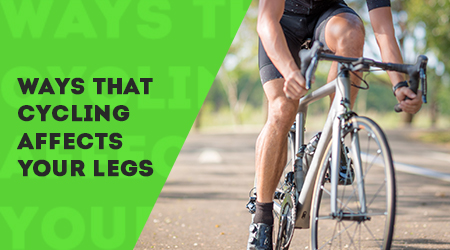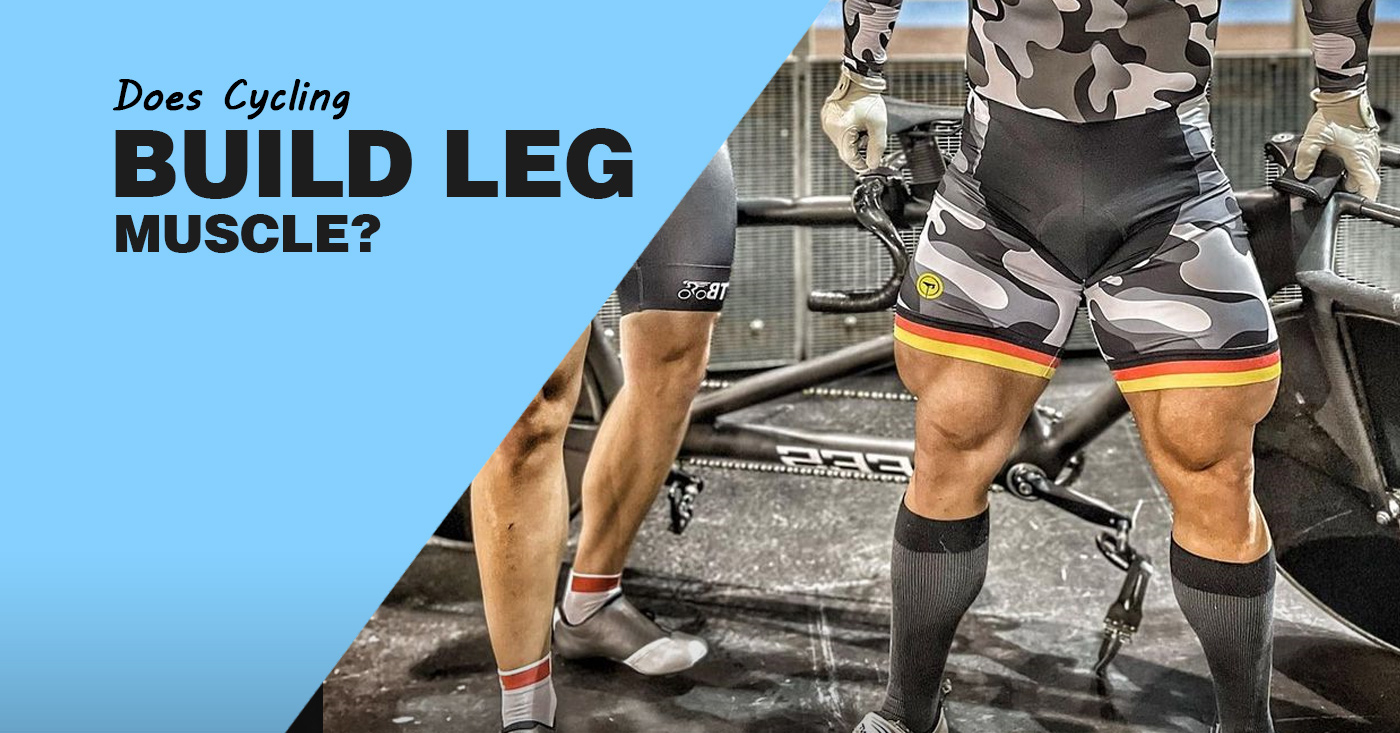The Impact of Cycling on Legs: An Overview
Cycling is a popular form of exercise that offers numerous health benefits, particularly for the lower body. By consistently engaging in this activity, individuals can significantly transform their cyclist legs before and after, leading to enhanced strength, stamina, and muscular development. Compared to other exercises, cycling targets a wide range of muscle groups, providing a balanced and comprehensive workout.
Cycling shapes the legs by systematically working on the quadriceps, hamstrings, glutes, and calves. The continuous pedaling motion strengthens and tones these muscles, contributing to an overall improvement in leg appearance and functionality. Moreover, cycling is a low-impact exercise, making it an ideal choice for individuals of all fitness levels and ages. As a result, it is increasingly being recognized as a valuable method for enhancing leg strength and cardiovascular health.
Muscle Groups Targeted in Cycling: An In-Depth Analysis
Cycling is a highly effective lower-body workout that targets several major muscle groups, including the quadriceps, hamstrings, glutes, and calves. These muscles play a crucial role in propelling the bike forward, maintaining balance, and absorbing shock during rides. By consistently engaging in cycling, individuals can significantly improve the strength and stamina of these muscle groups, leading to impressive transformations in their cyclist legs before and after.
- Quadriceps: These large muscles located at the front of the thigh are responsible for extending the knee and are crucial for pedaling power. Regular cycling can lead to increased quadriceps strength and definition.
- Hamstrings: Situated at the back of the thigh, the hamstrings work alongside the quadriceps to flex the knee and extend the hip. Strong hamstrings contribute to improved pedaling efficiency and overall leg power.
- Glutes: The gluteal muscles, consisting of the gluteus maximus, medius, and minimus, are essential for hip extension and stability during cycling. Strengthening these muscles can lead to enhanced power output and a more robust, toned appearance.
- Calves: The calf muscles, comprising the gastrocnemius and soleus, facilitate plantar flexion, which is essential for pushing down on the pedals. Developing these muscles can result in improved pedaling technique and increased lower-leg strength.
By consistently engaging these muscle groups during cycling sessions, individuals can achieve impressive leg transformations, enhancing both their appearance and overall fitness levels.
Before and After: Visualizing the Transformation
The transformation in cyclist legs before and after consistent training can be truly remarkable. As individuals dedicate themselves to regular cycling, they often experience noticeable improvements in muscle growth, vascularity, and tone. These changes are a result of several factors, including increased muscle mass, enhanced blood flow, and reduced body fat.
Visual examples of these transformations can serve as powerful motivators for those looking to enhance their leg strength and appearance. Numerous before-and-after images showcase the dramatic differences in cyclists’ legs, highlighting the power of consistent training and dedication to the sport.
In addition to the aesthetic benefits, the transformation of cyclist legs before and after training also includes functional improvements. Cyclists often report enhanced stamina, power, and overall cycling performance as a result of their training. These improvements can lead to increased confidence and enjoyment of the sport, making the transformation process even more rewarding.
By committing to regular cycling and incorporating best practices for muscle development and recovery, individuals can experience impressive transformations in their cyclist legs before and after. These changes serve as a testament to the power of dedication, consistency, and the unique benefits of cycling as a form of exercise.
The Science Behind Muscle Adaptation in Cycling
Cycling triggers a series of physiological adaptations in the body, primarily in the muscles, which contribute to the transformation of cyclist legs before and after consistent training. These adaptations include changes in muscle fiber types, increased mitochondrial density, and enhanced capillary growth.
Muscle Fiber Types
Muscles are composed of two primary fiber types: slow-twitch (Type I) and fast-twitch (Type II). Slow-twitch fibers are responsible for endurance activities, while fast-twitch fibers are involved in powerful, explosive movements. Regular cycling can lead to an increase in the proportion of slow-twitch fibers, enhancing endurance and overall leg strength.
Mitochondrial Density
Mitochondria are the “powerhouses” of cells, responsible for producing energy in the form of ATP. Increased mitochondrial density in muscle fibers allows for more efficient energy production, leading to improved cycling performance and leg strength.
Capillary Growth
Capillaries are the smallest blood vessels in the body, responsible for delivering oxygen and nutrients to muscle fibers. Regular cycling stimulates the growth of new capillaries, enhancing blood flow and oxygen delivery to the muscles, which in turn supports muscle growth and recovery.
By understanding the science behind muscle adaptation in cycling, individuals can better appreciate the transformative effects of this sport on their legs and overall fitness levels.
How to Enhance Your Cycling-Induced Leg Transformation
To maximize the benefits of cycling on leg strength and appearance, it is essential to follow a few practical tips and guidelines. Proper nutrition, cross-training, and recovery techniques play crucial roles in enhancing the transformation of cyclist legs before and after consistent training.
Proper Nutrition
Consuming a balanced diet rich in protein, carbohydrates, and healthy fats is vital for muscle growth and recovery. Aim to include lean protein sources, such as chicken, fish, and legumes, in every meal to support muscle repair and development. Additionally, incorporate complex carbohydrates, like whole grains and vegetables, to fuel your workouts and maintain energy levels.
Cross-Training
Engaging in various forms of exercise, such as strength training, yoga, or Pilates, can help improve overall leg strength, flexibility, and balance. Cross-training also reduces the risk of overuse injuries by ensuring that no single muscle group is overstressed. Incorporate cross-training activities into your routine 1-2 times per week to complement your cycling workouts.
Recovery Techniques
Proper recovery is essential for muscle growth and adaptation. Incorporate active recovery techniques, such as light cycling or stretching, into your routine following intense workouts. Additionally, consider using foam rollers or massage guns to alleviate muscle soreness and improve circulation. Finally, ensure that you are getting adequate sleep, as this is when the majority of muscle recovery and growth occurs.
By following these practical tips and guidelines, individuals can enhance their cycling-induced leg transformations and achieve optimal leg strength, stamina, and appearance.
Product Reviews: Gear to Support Cyclist Leg Development
Incorporating specific products into your cycling routine can aid in leg development and overall performance. Here, we review and compare various items, including compression garments, cycling shoes, and ergonomic saddles, to help you make informed decisions about the gear that best suits your needs.
Compression Garments
Compression garments, such as socks and sleeves, can help improve circulation and reduce muscle soreness during and after cycling workouts. Look for products with graduated compression, which provides the greatest support to the areas of the leg that need it most. Some popular brands include 2XU, SKINS, and Compressport.
Cycling Shoes
Cycling shoes play a crucial role in transferring power from your legs to the pedals. Stiff-soled shoes with a secure closure system, such as laces, ratchets, or BOA dials, are ideal for maximizing efficiency and comfort. Top brands to consider include Shimano, Specialized, and Sidi.
Ergonomic Saddles
An ergonomic saddle can help prevent discomfort and injuries by providing proper support and reducing pressure on sensitive areas. Look for saddles with cutouts, channels, or flexible designs that accommodate a variety of body types and riding styles. Brands like Specialized, Selle Italia, and Fizik offer a range of options to suit different needs.
By carefully selecting and incorporating these products into your cycling routine, you can support leg development, enhance performance, and contribute to the overall transformation of cyclist legs before and after consistent training.
Real-Life Success Stories: Inspiration from Dedicated Cyclists
Transforming cyclist legs before and after consistent training requires dedication, hard work, and perseverance. Here, we share inspiring stories of cyclists who have achieved impressive leg transformations, highlighting their routines, challenges, and achievements.
From Flabby to Fit: A Beginner’s Journey
Meet Sarah, a 35-year-old mother of two who decided to take up cycling as a way to regain her pre-pregnancy fitness. Initially struggling to complete short rides, Sarah gradually built up her endurance and strength, eventually tackling longer, more challenging routes. Over the course of a year, Sarah transformed her legs, shedding excess fat and building lean muscle, all while improving her cardiovascular health.
Overcoming Injury: A Seasoned Cyclist’s Triumph
For Mark, a seasoned cyclist in his 40s, a knee injury threatened to derail his passion for the sport. However, with the help of a physical therapist and a customized training plan, Mark was able to rebuild his leg strength and stamina, returning to the bike stronger than ever. His dedication to cross-training and proper recovery techniques played a crucial role in his successful comeback.
Age is Just a Number: A Senior Cyclist’s Story
Barbara, a 65-year-old retiree, proves that it’s never too late to start cycling. After taking up the sport as a way to stay active, Barbara quickly became hooked, eventually completing several long-distance rides. Her commitment to regular strength training and a balanced diet has resulted in a remarkable transformation in her legs, demonstrating that cyclist legs before and after training can yield impressive results at any age.
These inspiring stories serve as a testament to the power of dedication, consistency, and the transformative effects of cycling on the lower body. By following in the footsteps of these successful cyclists, you too can achieve impressive leg transformations and enjoy the numerous benefits of this rewarding sport.
Maintaining Gains and Preventing Injuries: Long-Term Strategies
Congratulations on achieving impressive leg transformations through cycling! To maintain your gains and prevent injuries, it’s essential to incorporate regular stretching, strength training, and periodization in your training plans.
Regular Stretching
Stretching helps maintain flexibility, reduces muscle soreness, and improves range of motion. Incorporate dynamic stretches before cycling workouts and static stretches after your rides. Focus on stretching the quadriceps, hamstrings, glutes, and calves, which are the primary muscle groups involved in cycling.
Strength Training
Strength training exercises, such as squats, lunges, and deadlifts, can help maintain leg strength and muscular balance. Aim to perform strength training exercises 2-3 times per week, incorporating both lower-body and full-body workouts. This will not only support your cycling performance but also help prevent injuries by ensuring that no single muscle group is overstressed.
Periodization in Training Plans
Periodization involves structuring your training into distinct phases, each with specific goals and intensities. By varying the volume, intensity, and frequency of your workouts, you can avoid plateaus, prevent overtraining, and reduce the risk of injuries. A periodized training plan typically includes base, build, and peak phases, followed by a recovery period.
By incorporating these long-term strategies into your cycling routine, you can maintain your cyclist legs before and after transformation, ensuring that your hard-earned gains are preserved and that you continue to enjoy the numerous benefits of this rewarding sport.








